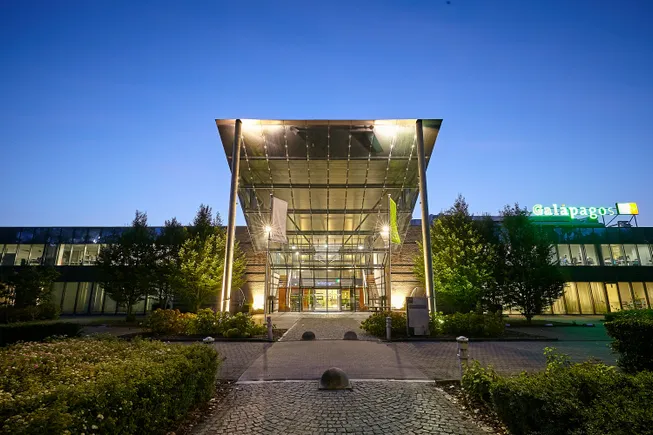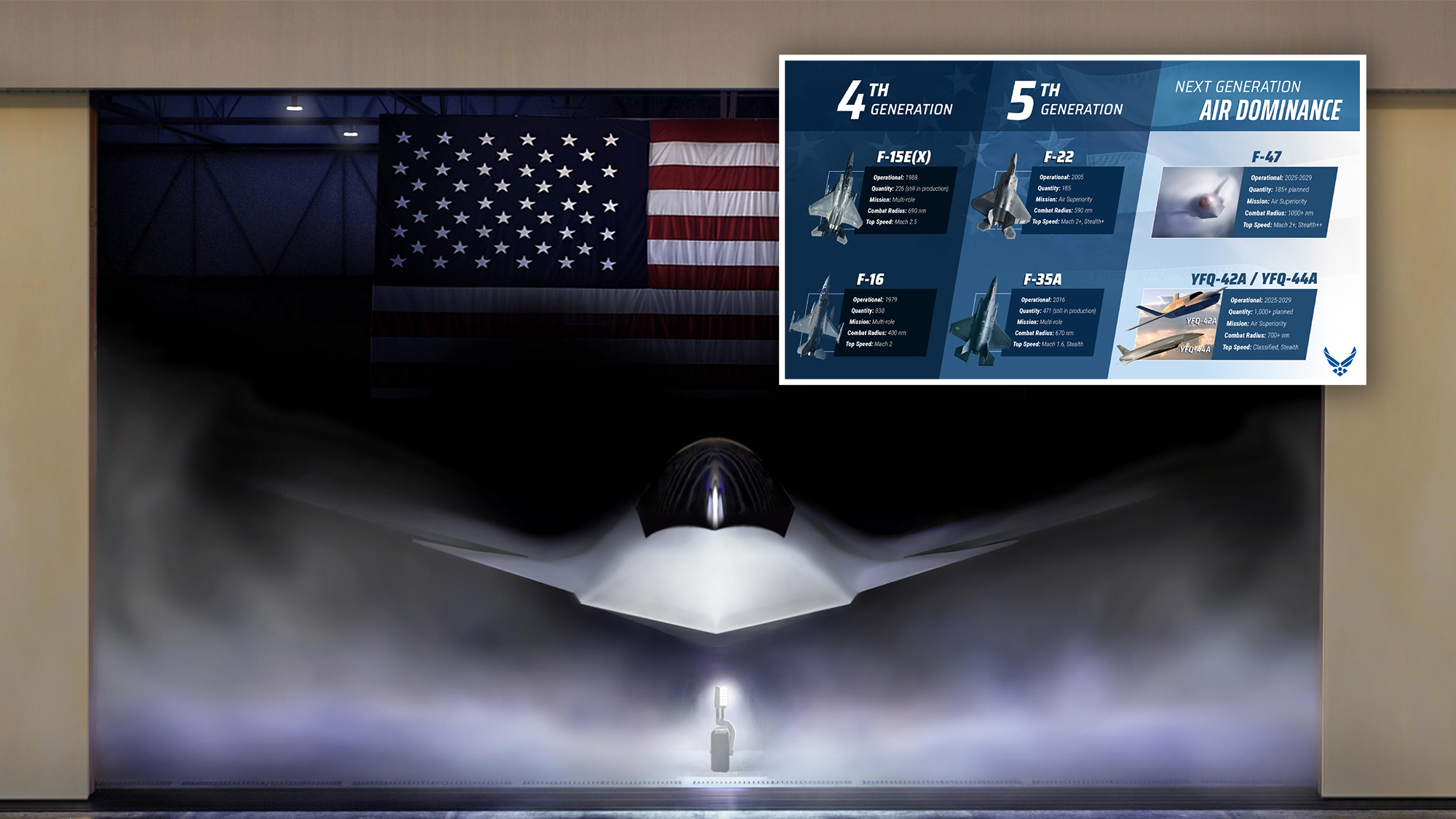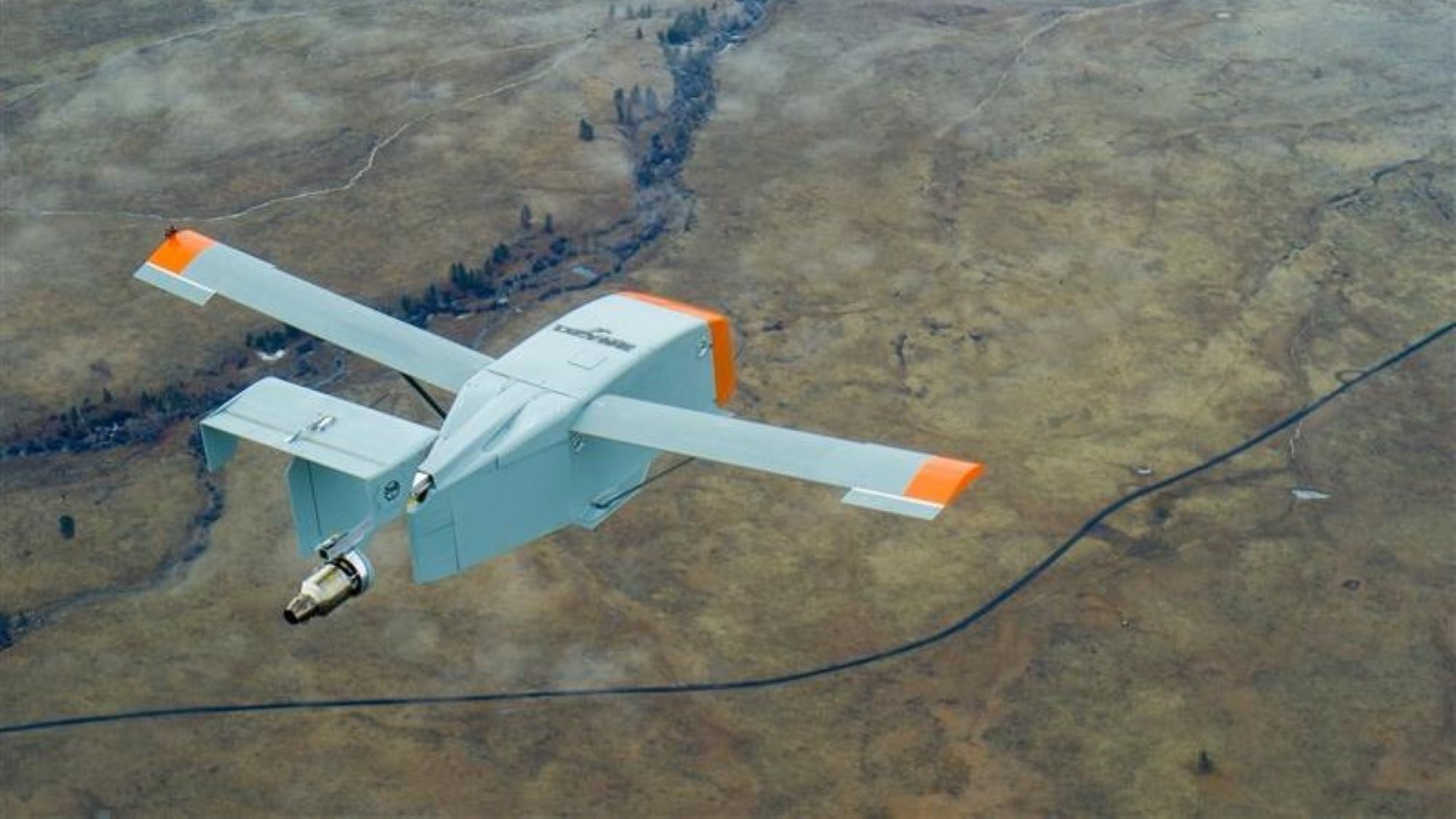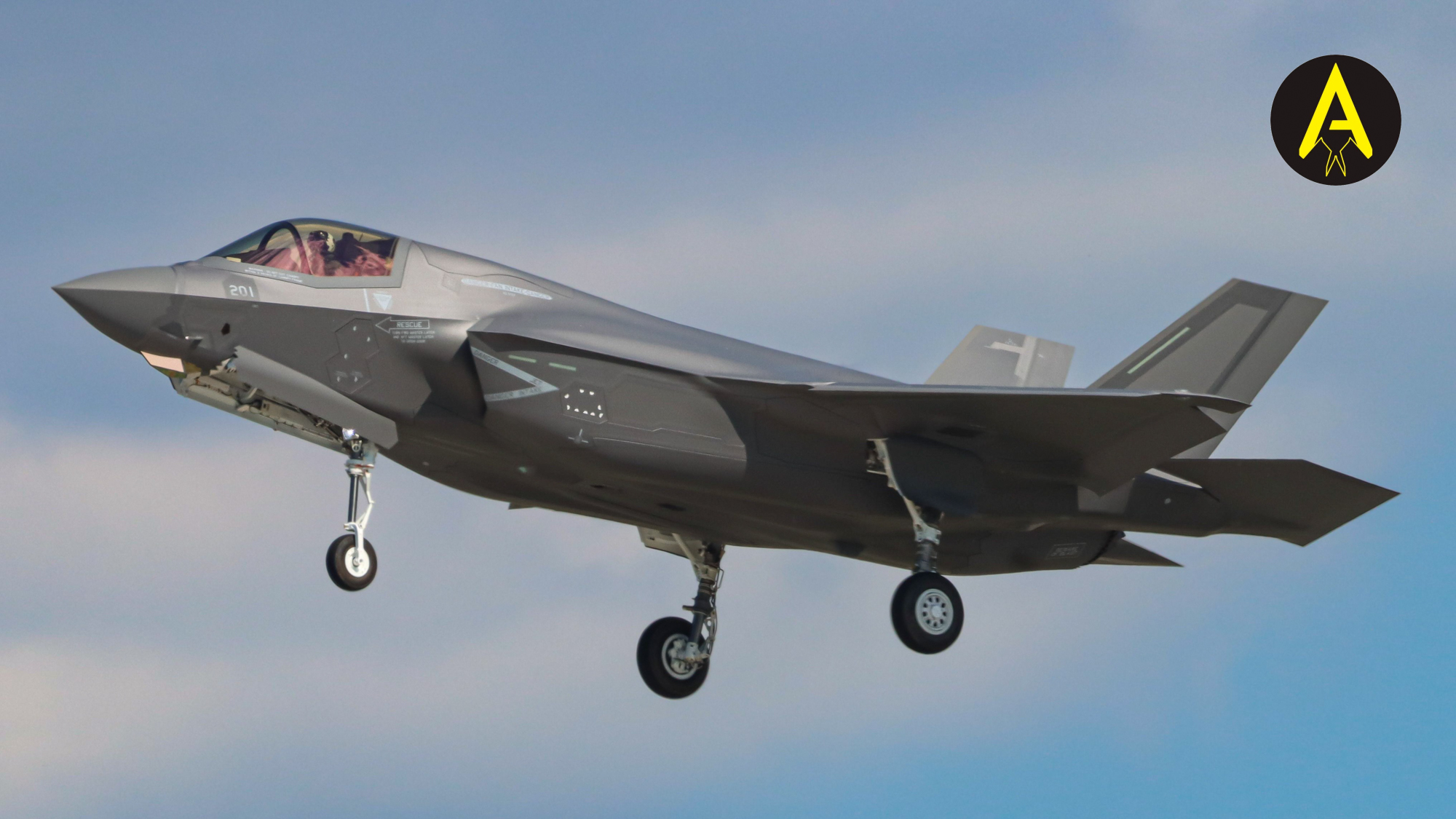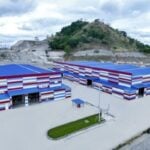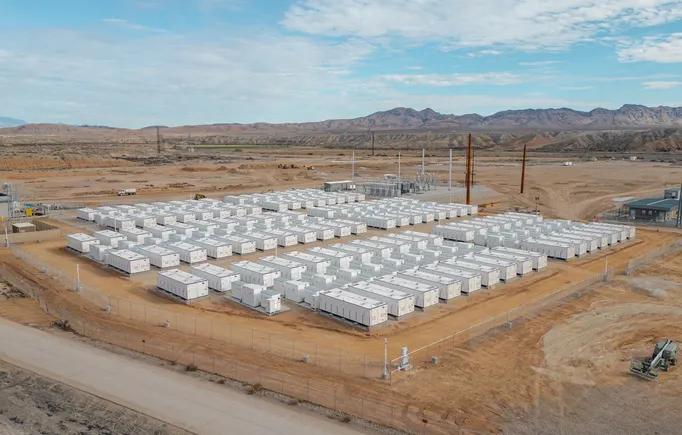Fiber optic is the answer for DoD’s ever-increasing network bandwidth needs
[Sponsored] “Data needs to find fiber” is the only way to achieve secure ultra-low latency security for GovCloud applications and AI demand.


A U.S. Air Force expeditionary communications Airman removes the outer layer of cable to access its wiring at an undisclosed location, Jan. 13, 2024. Cable and Antenna maintenance Airmen are responsible for maintaining fiber optic, local area network and copper cabling used to support all computer, phone and radio equipment on the installation. (Photo by Staff Sgt. Lawrence Sena, U.S. Air Force Courtesy Photo)
The differences between DODIN (Department of Defense Information Network) capabilities and scale and what individual commands can do are vast, but can be closed with a Private Connectivity Fabric (PCF).
Breaking Defense discussed data transport demands and opportunities such as a huge expansion of fiber capacity through wavelengths with Josh Finke, senior vice president, Public Sector, Lumen Technologies.
Breaking Defense: What are the challenges the DoD currently faces when it comes to network transport and secure data transport?
Josh Finke: When we look at the market, one of the first things that comes to mind is that there’s a vast array of networks out there. When we talk about the DoD network, what many people commonly lose sight of is that it’s made up of hundreds if not thousands of network components introduced over multiple decades.
Finding a way to operate in today’s world where instant access to data is not only required but is a true necessity for warfighters to perform their missions presents a lot of challenges. There’s challenges around different protocols and legacy networks that are still in use today.
In addition, there’s varying levels of security and compliance around initiatives that each branch has put forward. When you take a look at where the DODIN (Department of Defense Information Network) is versus what individual commands are doing, at the end of the day there are vast scales and vast differences that exist.
To address these challenges, we believe the path that the DoD needs to be pursuing is a modernized secure network that is usable across every branch, every location, no matter the mission, no matter the outcome, and with reliability, low latency, and bandwidth to support the adapting and changing environment.
The intelligence that’s coming from the field is completely different than it was just a short number of years ago. Now we’re wildly dependent on signals and sensor data that are being generated truly out at the edge. That demand fits well into Lumen’s vision around where a network should be today.
We have a strong belief that data needs to find fiber as fast as possible. Fiber to this day continues to be the number-one transport method for reliability, ultra-low latency security, and an ability to tie into the ever evolving world around GovCloud and AI demand. Our big focus as an organization is driving out that true enterprise fiber network.
How is data transported now, for the most part?
It’s a mix. There’s legacy copper networks that are 40-50 years old that are still being leveraged in some parts of the DoD, along with everything in between. You have varying levels of use of satellite connectivity, some of it geostationary that has extreme latency. You even have fiber out there, though much of it is older.
We’re finding that the network of today, even if it’s being compared to a fiber network of 10-20 years ago, is a totally different situation. Now we have the ability to have physical security built into the network itself.
For our large-scale fiber expansion that we’re doing right now, we have the ability to detect minute land movement along the path of the fiber – whether that be from construction digging or somebody trying to maliciously get to fiber assets. We can proactively detect that and deploy resources to stop it. That simply didn’t exist until recently, including the ability to run extreme long-haul fiber without the need for repeaters.
All of these innovations that are being put into the ground today simply didn’t exist even a few years ago. That’s the network that we believe the DoD and the government at large needs to be moving towards.

U.S. Air Force Tech. Sgt. Charmaine Mosby, a network engineer from the 154th Communications Squadron, establishes an operation communication system during a field training exercise at Joint Base Pearl Harbor-Hickam, Hawaii on February 2, 2025. (US Air National Guard photo by Staff Sgt. Robert Cabuco)
How does the addition of AI and machine learning affect the ability of the network pipes to transport data? You hear about AI needing a lot more power but you don’t hear about it needing larger transport networks.
It sounds like you’ve listened to some of our earnings calls because that’s one of the things that our CEO Kate Johnson and CFO Chris Stansbury talk about a lot, which is that the bandwidth and network considerations have largely not been a focus in the conversation. It’s been about power, cooling and compute, but the network is what makes it all happen.
To that end, AI requires certain things from the network. For one, ultra-low latency, high-bandwidth connectivity is one of the core tenants as a requirement. Another, though people are not necessarily considering this, is that AI is typically not a point-to-point connection. AI is usually a multi-data-center, multi-location process, with the ability to have a true fabric for connecting any user, any service, any application to the data repository, as well as the intelligence as AI starts to move to drive mission outcomes.
That’s where you need to leverage multiple cloud providers, multiple different data centers. That connectivity is why we’re focusing on our Private Connectivity Fabric (PCF), which is driving the new AI demand.
When we look at the DoD, their ability to connect into a cloud and get secure services no matter who the provider is something that we believe we’re positioned to do that no one else comes close to. Our proof is the fact that every hyperscaler has chosen Lumen as the network provider moving forward around their fiber build out, they’re driving for the AI initiatives.
You mentioned Private Connectivity Fabric. Define it for us, and its significance.
PCF is a modular and secure custom architecture that allows agencies to modernize their networks and securely transmit large amounts of data with high-speed low-latency connections between multiple data centers and/or cloud environments. This includes a combination of conduit, fiber, waves, including encrypted waves, to create a dedicated network.
In terms of what it means to an individual customer, it could be a vast expansion of a fiber network that has security services built on top of it. It could be leveraging the largest network that exists here within the United States, and Lumen’s use of capabilities like encrypted waves to leverage assets that are already down in the ground – and everything in between.
Then we bring you all of the cloud providers, including all the GovCloud solutions, connecting you to all the sites that you need by building on the idea of a fabric. You’re no longer reliant on the Internet to get there, or a point-to-point connection, or expensive cross connects through some of the colocation providers. We’re bringing all those connectivity points to one fabric that’s secure and allows you to get wherever you need at any time.
You’ve mentioned waves a couple times and I understand that Lumen was highly ranked in Frost & Sullivan’s 2024 report on wavelength services in North America. What are wavelength services and what’s the significance of this?
With fiber there’s a vast amount of capability that has evolved over the years. One is that when fiber was laid down for network expansion in the past, many times, especially for DoD customers, they would purchase dark fiber. That basically means they would purchase a dedicated amount of fiber in the ground and then run their connectivity up to the bandwidth limits that essentially were on that piece of fiber. Many times, though, it was one stream of data.
With waves, the optics and the equipment that is at the end of these fiber connections has evolved to the point where you can have multiple bandwidth and data streams leveraging the same piece of glass. That same piece of fiber can be carrying multiple data streams.
The capability comes from using different wavelengths of light on that piece of fiber. Those different wavelengths each contain a completely separated portion of network traffic. That wave then can be across a much broader spectrum of bandwidth on the same amount of glass.
The encrypted concept is the ability to encrypt that specific wavelength of light on that fiber so that there’s no risk of data leakage or any sort of data infiltration across other wavelengths that are going across that same piece of fiber. With an encrypted wavelength, in-flight data is inherently protected. What’s more, private, point-to-point connections secure that already encrypted data and keep it separate from shared data connection. These two combined components provide incredibly secure data transport
This lets us leverage existing pathways, and we have a massively diverse amount of bandwidth that’s out there. That can now be exponentially grown compared to what the original plan was on laying the fiber in the ground because of the fact that we can have all these different wavelengths on that network.
You can leverage an asset that is already out there, and again, we have the largest network in the continental United States and in many parts of the world. The vast Lumen network is built to power AI initiatives. Lumen expects to end 2025 with 16.6 million intercity fiber miles and for that total to increase to 47 million intercity fiber miles by the end of 2028.
You’re no longer restricted to adding new fiber into the ground for a network. You can leverage our mass-scale network now and can have encrypted transport across all the routes that we already have.
Lumen has been ranked as the #1 leader in Waves three consecutive times by VSG for our percentage of market share and, as mentioned, we recently received Frost & Sullivan’s top award for our 400G connectivity, route diversity, and encrypted wavelength services. This recognition validates our commitment to focus on what matters most to our customers.
Final thoughts?
The important dynamic to understand about today’s world is that bandwidth demands are ever increasing. There’s no one out there like Lumen that can support the bandwidth demands, the need for connectivity to every resource, whether that be a cloud provider, a private portion of the network within the DoD, or connecting out to a vast array of services, endpoints, and technology out at the edge.
We do that on a real-time basis with security built into every level and layer of the network, and have the expertise to operate, maintain, and continue to drive innovation around that. That’s something that unless you’re partnered with the right organization, then you’re very quickly going to be left behind.
Mission enablement around success is something that Lumen is well positioned to do. We know that the DOD is not in the business of IT. We know that the mission very much matters and our ability to make that mission happen is what we have a great sense of pride in.


































































